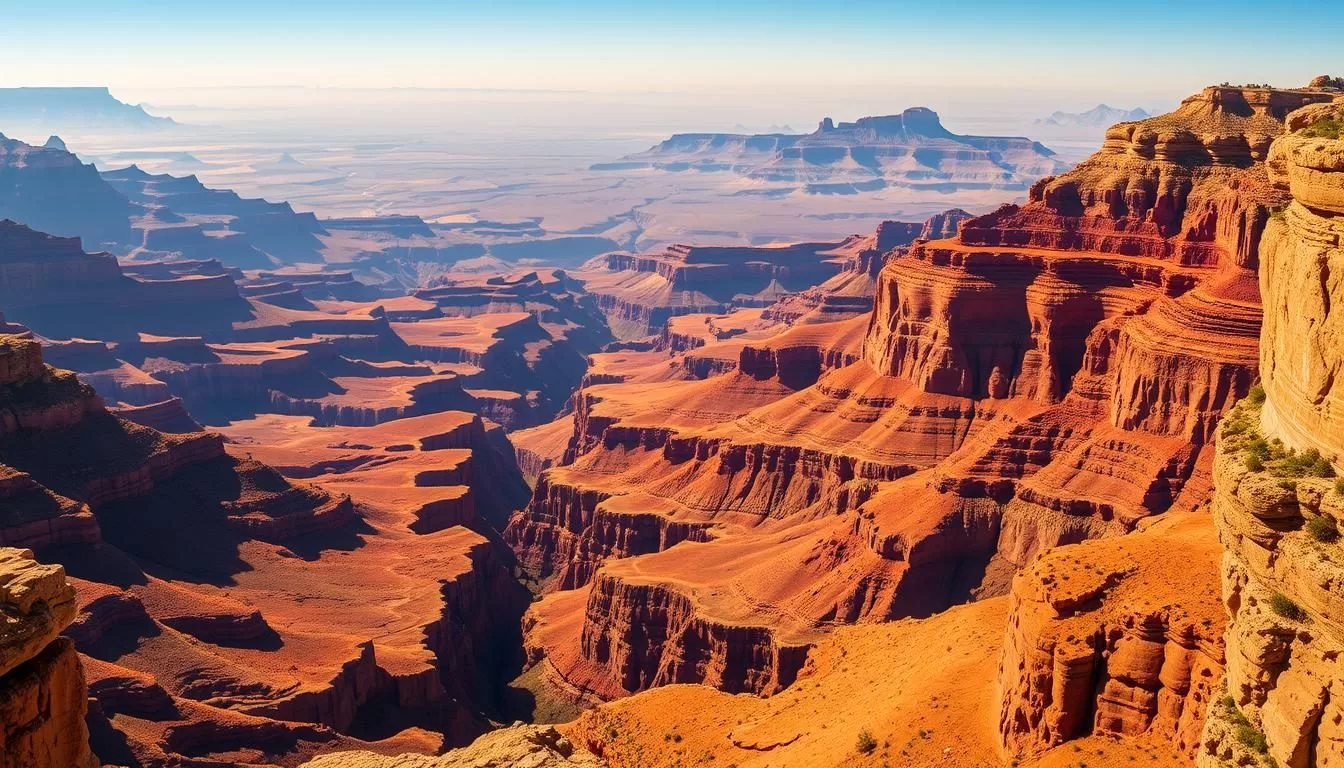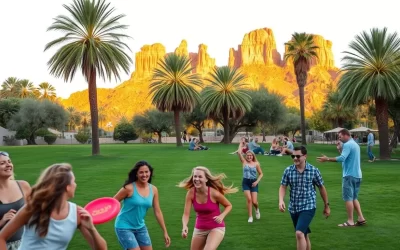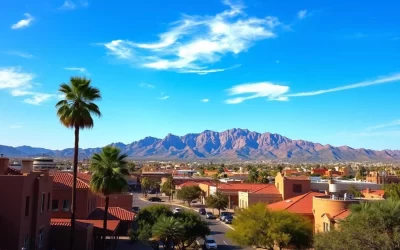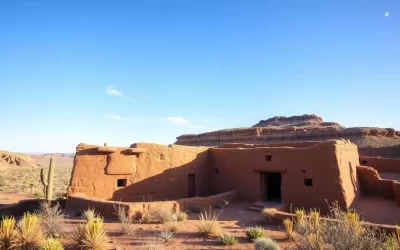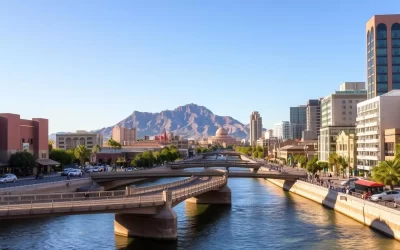You’re about to embark on an adventure of a lifetime at one of America’s most iconic natural wonders. With over six million visitors annually, it’s the country’s second most popular national park.
The park offers diverse experiences across its different areas, including the South Rim, which is open all year, and the North Rim, open from May 15 to October 15. As you plan your visit, this comprehensive guide will help you navigate these areas and make the most of your trip.
You’ll discover breathtaking vistas that stretch across 277 miles, with depths reaching over a mile below the rim. With this guide, you’ll learn about the best viewpoints and essential information about park fees and accessibility options.
Discovering the Grandeur of the Canyon
As you step into Grand Canyon National Park, the vast expanse of one of the world’s most breathtaking natural wonders unfolds before your eyes. The park is divided into distinct areas, each offering a unique perspective on this natural marvel.
Understanding the Different Rim Areas
The Grand Canyon has two main rim areas: the South Rim and the North Rim. The South Rim is more accessible and open year-round, while the North Rim is open seasonally from May 15 to October 15. Understanding the differences between these areas can help you plan your visit more effectively.
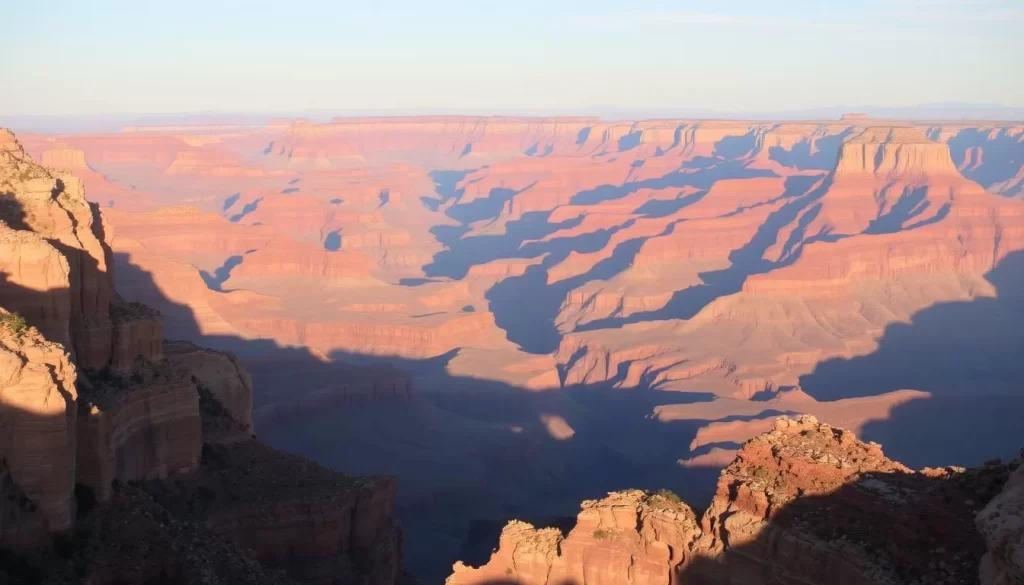
Park Basics: Fees, Hours, and Accessibility
To plan your visit, you’ll need to know that entrance fees to Grand Canyon National Park are $35 per vehicle, valid for seven days. The South Rim is open 24/7, while the North Rim has limited seasonal access. The Grand Canyon Visitor Center is open from 9 am to 4 pm, providing valuable information and resources. Accessibility is a priority, with many viewpoints and facilities designed for visitors with mobility challenges.
- Entrance fees: $35 per vehicle for seven days
- The South Rim is open 24/7 year-round
- North Rim is open from May 15 to October 15
- Accessibility features for visitors with mobility challenges
Best Time to Visit Grand Canyon National Park
To make the most of your Grand Canyon experience, time is everything. Understanding the park’s climate and seasonal variations is crucial for planning your visit.
Peak Season vs. Shoulder Seasons
The Grand Canyon is a year-round destination, but the peak tourist season is from June to August. If you prefer fewer crowds, consider visiting during the shoulder seasons (April-May or September-October).
Weather Considerations Throughout the Year
Weather at the Grand Canyon varies significantly with elevation. The South Rim, at 7,000 feet, can be chilly, especially at sunrise. Be prepared for temperature variations, as the rim is often 20-30 degrees cooler than the inner canyon. Sudden weather changes can occur any time of year, so pack layers, rain gear, and sun protection.
- Summer highs at the South Rim reach 80-85°F (27-29°C), while the inner canyon can exceed 100°F (38°C).
- Winter brings snow and ice to the South Rim, with temperatures averaging 30-45°F (-1-7°C).
- The North Rim, at 8,000 feet, is typically 10°F cooler than the South Rim and experiences heavy snowfall, closing from mid-October to mid-May.
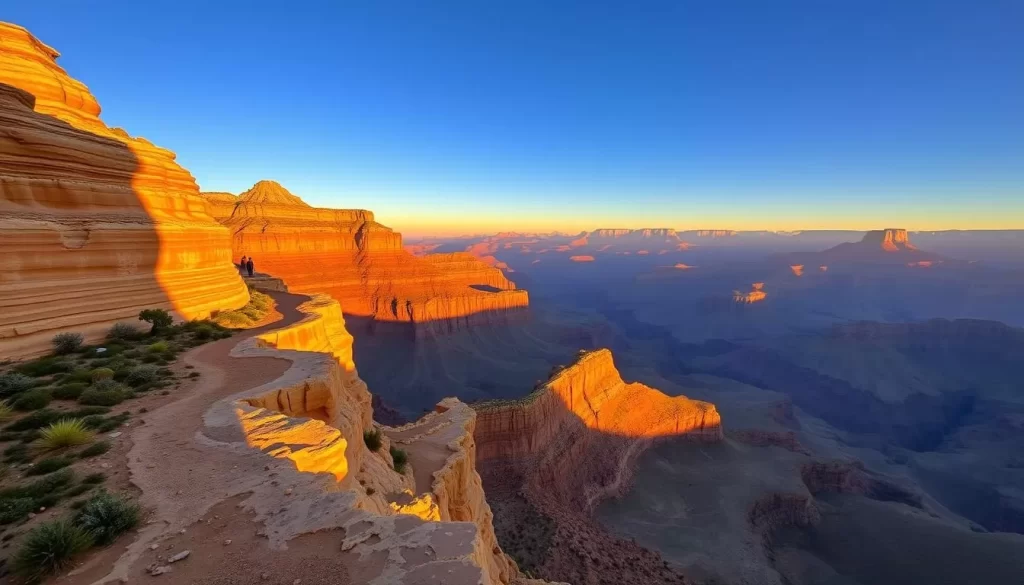
South Rim: The Classic Grand Canyon Experience
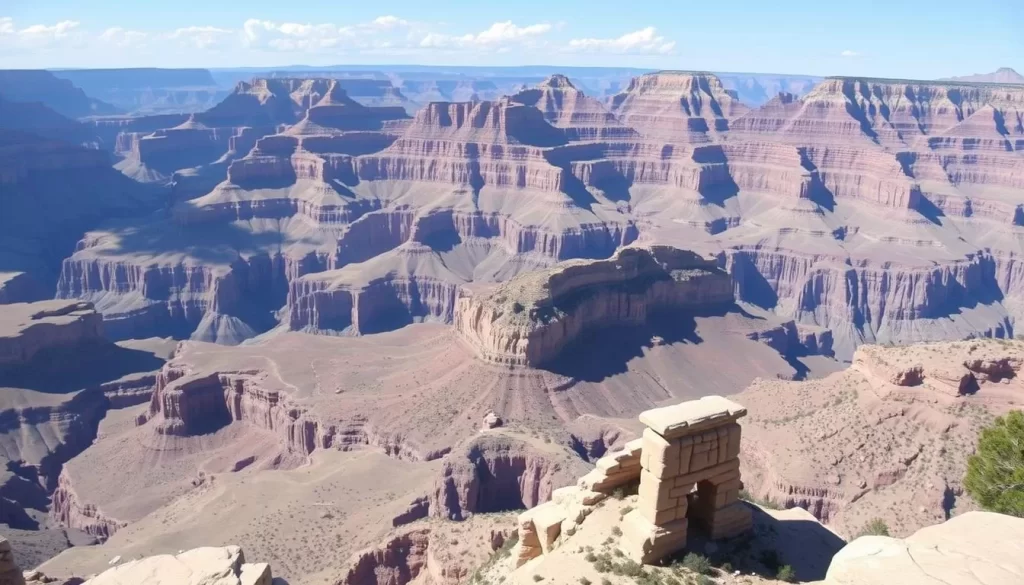
Experience the quintessential Grand Canyon adventure at the South Rim, open 365 days a year. The South Rim is the most accessible part of the Grand Canyon National Park, making it a favorite among visitors from all over the world.
Grand Canyon Visitor Center and Services
The Grand Canyon Visitor Center is your first stop for information on park activities, trails, and scenic viewpoints. Here, you can get an overview of the park’s history, geology, and wildlife. The visitor center also offers various services, including park rangers who can provide insights and recommendations for your visit.
Year-Round Accessibility and Amenities
The South Rim offers numerous amenities to make your visit comfortable. You’ll find a range of lodging options, from historic hotels to modern accommodations, as well as diverse dining establishments and tour operators. The area is easily navigable using the free shuttle bus system, which connects visitor centers, lodges, campgrounds, and major viewpoints. Family-friendly facilities include picnic areas, accessible viewpoints, and the Junior Ranger program.
North Rim: The Quieter Side of the Canyon
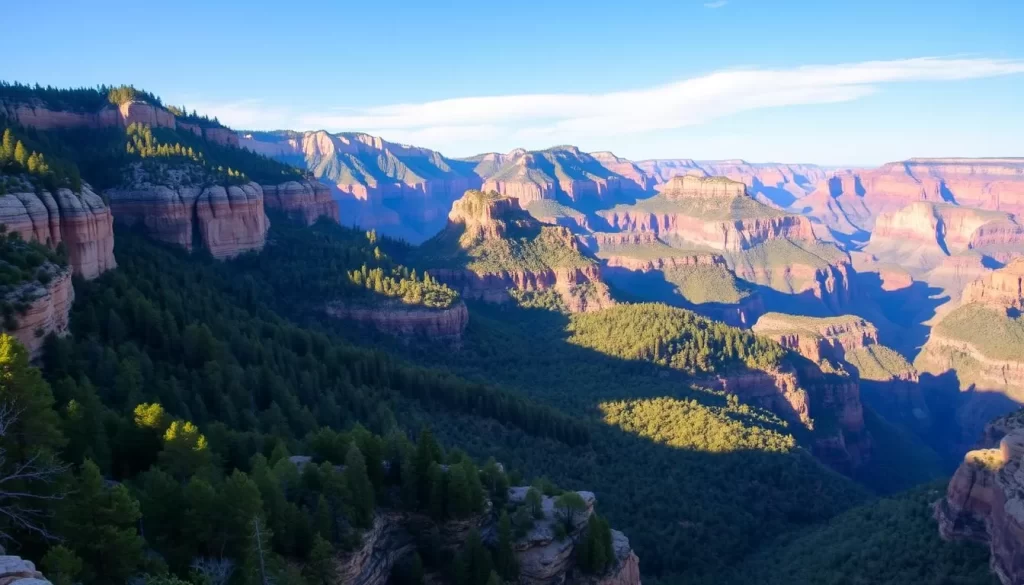
The North Rim, standing 8,000 feet above sea level, provides a distinct and tranquil alternative to the South Rim’s vibrant atmosphere. This area of Grand Canyon National Park is characterized by its unique ecosystem and breathtaking views.
Seasonal Access
The North Rim is open seasonally from May 15 to October 15. This limited access period is due to its remote location and the heavy snowfall it receives during the winter months.
Unique Flora and Cooler Temperatures
The high altitude of the North Rim supports a mixed conifer forest, featuring trees like ponderosa pine, Douglas fir, aspen, and spruce. The cooler temperatures, typically 10°F lower than the South Rim, make it an ideal summer retreat. Visitors can enjoy spectacular fall colors in September and early October as the aspen trees turn brilliant gold.
Key Experiences at the North Rim:
- Experience a different ecosystem with its mixed conifer forest.
- Enjoy cooler temperatures, making it a refreshing summer destination.
- Witness spectacular fall colors in September and early October.
- Abundant wildlife viewing opportunities, including mule deer and Kaibab squirrels.
- Unique viewpoints like Point Imperial offer expansive vistas.
Must-See South Rim Viewpoints
As you explore the Grand Canyon’s South Rim, you’ll discover several iconic viewpoints that showcase the park’s natural beauty. The South Rim offers a variety of unforgettable experiences, from expansive views to historic landmarks.
Mather Point and Yavapai Observation Station
Mather Point is one of the most popular viewpoints, offering breathtaking views of the canyon. The nearby Yavapai Observation Station provides a comprehensive look at the canyon’s geology and history.
Desert View Watchtower
The Desert View Watchtower is a historic landmark that offers panoramic views of the canyon. Designed by Mary Colter, it stands as a testament to the region’s rich cultural heritage.
Lipan Point and Hermit’s Rest
![]() views, revealing the widest panorama of canyon layers. You can also explore Hermit’s Rest, the western terminus of Hermit Road, which is accessible via the free Hermit Road shuttle bus. The Rim Trail connects various viewpoints, allowing for a more intimate experience with the canyon’s edge.
views, revealing the widest panorama of canyon layers. You can also explore Hermit’s Rest, the western terminus of Hermit Road, which is accessible via the free Hermit Road shuttle bus. The Rim Trail connects various viewpoints, allowing for a more intimate experience with the canyon’s edge.
Scenic Drives Worth Taking
The Grand Canyon’s scenic drives are a must-do, and here’s what you need to know. The park offers several routes that provide breathtaking views and unique experiences.
Desert View Drive (23 miles)
Desert View Drive is a 23-mile scenic drive that runs along the South Rim, offering stunning views of the canyon. You’ll pass through nine designated overlooks, each with its own unique perspective.
Hermit Road and Cape Royal Road
From March 1 to November 30, Hermit Road is closed to private vehicles, but you can use the free Hermit Road (Red) Route shuttle bus. The road is also open to foot and bicycle traffic. On the North Rim, you can explore scenic drives to Point Imperial and Cape Royal, which wind through forests before revealing spectacular canyon views. The drive to Point Imperial is 11 miles one way and takes about 20 minutes. Cape Royal Road extends 23 miles from the North Rim developed area and takes about 45 minutes one way. You can tour these routes in your vehicle, taking in the views along the way.
| Scenic Drive | Distance | Time |
|---|---|---|
| Desert View Drive | 23 miles | Varies |
| Point Imperial | 11 miles one way | 20 minutes |
| Cape Royal Road | 23 miles one way | 45 minutes |
![]()
Grand Canyon National Park, Arizona: Best Things to Do – Top Picks
As you explore the Grand Canyon, you’ll discover a wide range of activities that cater to different interests and ages. The park offers numerous ways to experience its natural beauty and rich history.
Watching Sunrise or Sunset at the Canyon
Watching the sunrise or sunset at the Grand Canyon is a must-do experience. Find a spot at a popular viewpoint, such as Mather Point or Yavapai Observation Station, and witness the breathtaking colors of the canyon. You can even join a ranger-led program to enhance your experience.
Exploring Historic Buildings and Museums
The Grand Canyon is home to several historic buildings and museums that provide valuable information about the park’s history and geology. Visit the Grand Canyon Visitor Center to plan your trip and gain insights into the park’s attractions. You can also explore the Desert View Watchtower and other historic sites.
Attending Ranger Programs and Events
The Grand Canyon offers a variety of ranger-led programs and events that cater to different interests. Check the park’s digital calendar or visit the visitor center for information on scheduled programs, including geology talks, guided walks, and stargazing events. You can also participate in the Junior Ranger program with your family.
Hiking Adventures Below the Rim
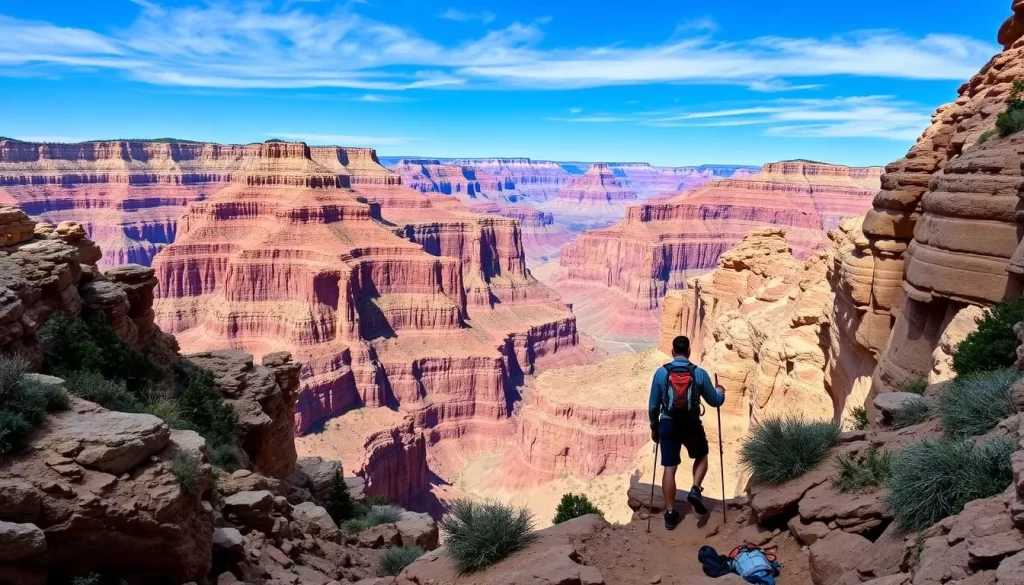
For those seeking adventure, hiking down into the Grand Canyon is a must. The park offers several trails that cater to different skill levels and preferences, ensuring that every visitor can experience the canyon’s grandeur up close.
Bright Angel Trail: The Classic Canyon Hike
The Bright Angel Trail is one of the most popular and well-maintained trails in the Grand Canyon. It descends from the South Rim down to the bottom of the canyon, offering stunning views and access to Phantom Ranch.
South Kaibab Trail: Spectacular Vistas
The South Kaibab Trail is another iconic trail that offers spectacular vistas of the Grand Canyon. It’s known for its steep descent and stunning viewpoints, making it a favorite among experienced hikers.
Rim Trail: Perfect for Casual Hikers
The Rim Trail is a mostly paved, nearly level path that follows the edge of the canyon for 13 miles from the South Kaibab Trailhead to Hermit’s Rest. It’s perfect for families and casual walkers due to its accessibility and lack of strenuous inclines. You can customize your experience by walking short segments between shuttle bus stops.
The section between Mather Point and Yavapai Observation Station features the Trail of Time, an interpretive walking timeline. The western portion along Hermit Road offers spectacular viewpoints like Hopi, Mohave, and Pima points.
Unique Canyon Experiences
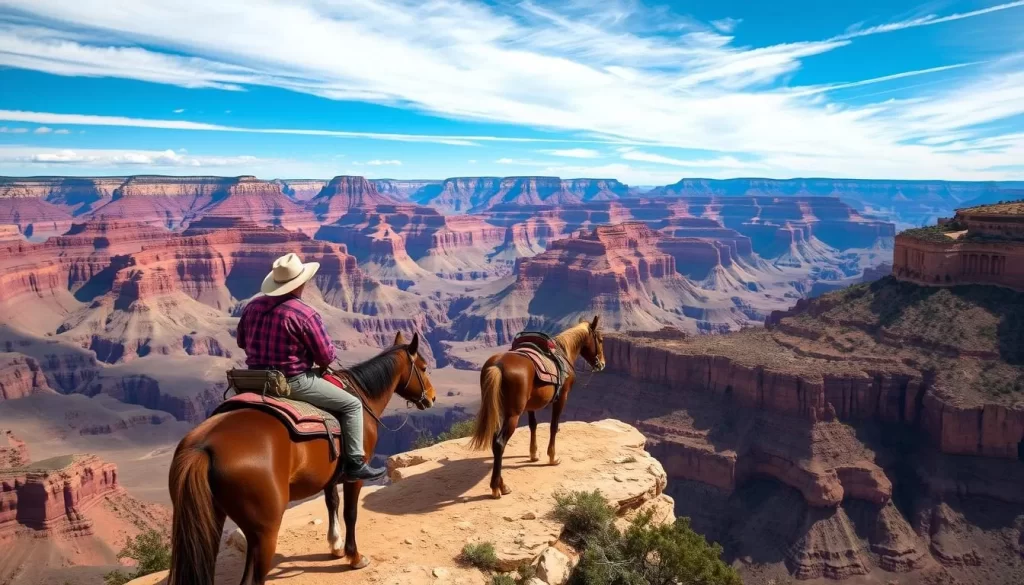
Discover the Grand Canyon’s hidden gems through its diverse range of activities and excursions. For many people, a trip to the Grand Canyon isn’t complete without experiencing its unique rides.
Mule Rides Along the Rim and Into the Canyon
Explore the Grand Canyon on horseback with guided mule rides that offer a thrilling way to experience the canyon’s vast expanse. These rides range from rim trails to descents into the canyon.
Colorado River Rafting Adventures
For a gentler or more exhilarating experience, consider a rafting trip down the Colorado River. Smooth water float trips and whitewater rafting adventures are available, offering a unique perspective on the Grand Canyon.
Where to Stay at Grand Canyon
Finding the perfect place to stay is crucial when planning your Grand Canyon adventure. The Grand Canyon offers a range of accommodations to suit different preferences and needs.
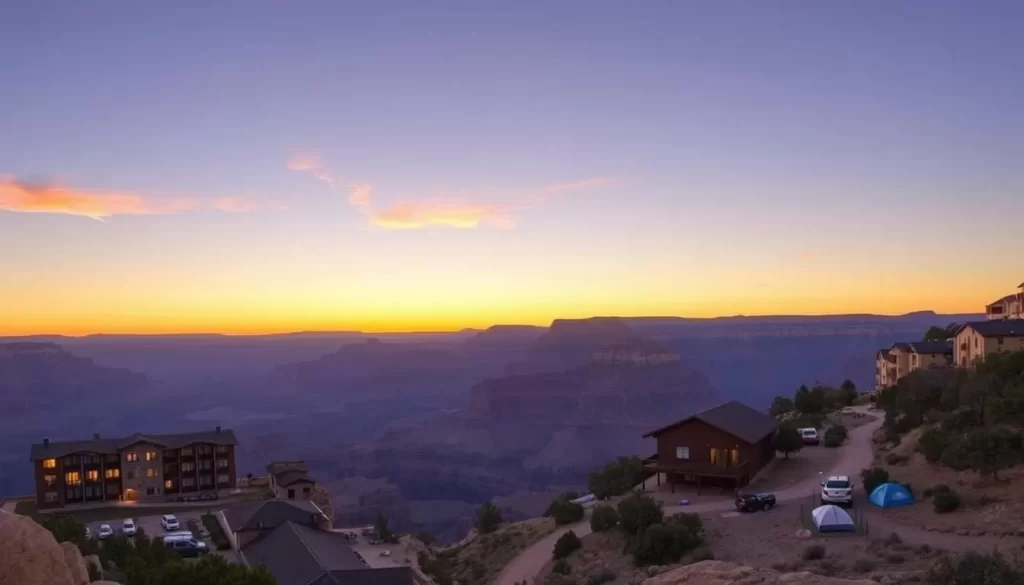
Historic Lodges
The Grand Canyon is home to historic lodges that offer a unique experience. El Tovar and Bright Angel Lodge are two of the most renowned options, providing comfortable accommodations and easy access to the park’s main attractions.
Camping and RV Options
For those who prefer to connect with nature, the Grand Canyon offers several camping and RV options within the Grand Canyon National Park. You can stay at Mather Campground on the south rim, which has 327 sites and accepts reservations. Alternatively, Trailer Village provides full hook-ups for RVs, and Desert View Campground offers a more primitive camping experience on a first-come, first-served basis.
The North Rim Campground is another option, featuring 90 sites amidst tall pines and aspen groves. For a more secluded experience, backcountry camping is available with a permit.
Getting Around the Park
Discover how to get around Grand Canyon National Park with ease. The park offers various transportation options to enhance your visit, making it convenient to explore its vast landscapes.
Free Shuttle Bus System
The park’s free shuttle bus system is an efficient way to navigate the South Rim. With multiple routes covering key viewpoints, visitor centers, and lodges, you can enjoy the scenery without worrying about parking. The shuttle service operates regularly, allowing you to hop on and off at your preferred stops.
Grand Canyon Railway
For a unique experience, consider arriving at the Grand Canyon via the historic Grand Canyon Railway from Williams, Arizona. This 65-mile journey takes approximately 2 hours and 15 minutes each way, offering entertainment and nostalgic charm. You can choose from various classes of service, including luxury options with panoramic views. The railway allows you to avoid busy summer traffic and parking hassles, making your trip to the Grand Canyon more enjoyable.
| Transportation Option | Details | Benefits |
|---|---|---|
| Free Shuttle Bus | Multiple routes across South Rim | Convenient, parking-free exploration |
| Grand Canyon Railway | Scenic 65-mile journey from Williams, AZ | Nostalgic experience, avoids traffic |
One-Day Grand Canyon Itinerary
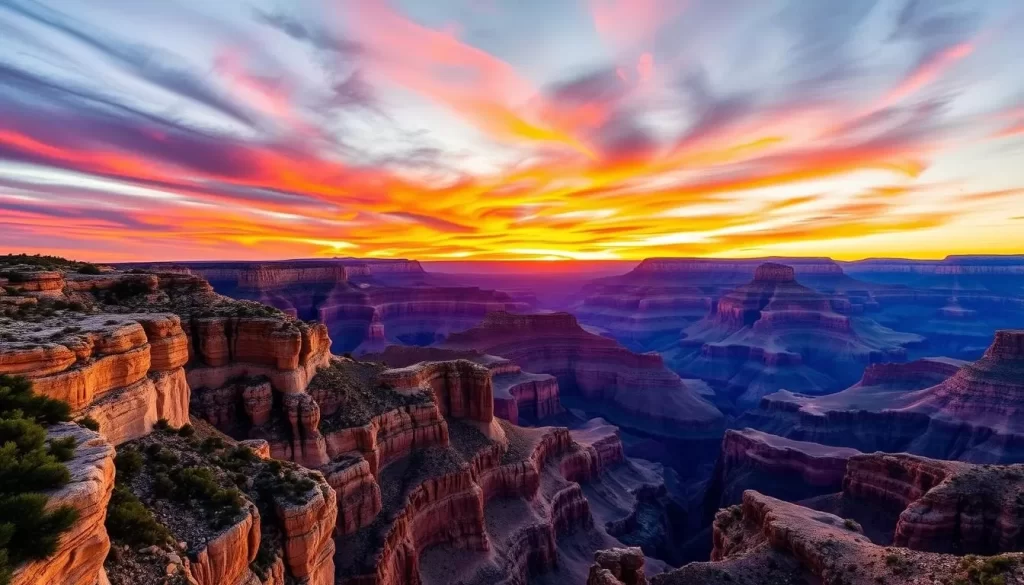
Visiting the Grand Canyon in one day is a challenge, but with a well-planned itinerary, you can experience the best of this natural wonder. Start your day early to make the most of your visit.
Morning: Sunrise and Visitor Center
Begin your day by watching the sunrise at Hopi Point on the South Rim, one of the premier sunset locations, but also a great spot to start your day. Afterwards, head to the Grand Canyon Visitor Center to get an overview of the park’s history, geology, and trails. You can also pick up a map and get insights from park rangers.
Afternoon: Scenic Drive and Short Hike
In the afternoon, take the Desert View Drive, a scenic route that offers multiple viewpoints along the way. For a short hike, consider the Rim Trail, which is perfect for casual hikers and offers spectacular views of the canyon. You can also explore Grand Canyon Village and enjoy the amenities available.
Evening: Sunset Viewing and Dinner
For sunset, return to Hopi Point or another viewpoint like Yavapai Point, arriving at least 30-45 minutes early to secure a good spot. After watching the canyon walls transform with the setting sun, head to the El Tovar Dining Room for a memorable dinner. Don’t forget to stop by one of the gift shops in the village to pick up a gift before you leave, as a memento of your visit with the people you care about.
Planning Your Grand Canyon Adventure
As you plan your trip to the Grand Canyon, consider the vast array of experiences that await you. To make the most of your visit, it’s essential to plan ahead, especially if you’re hoping to stay inside the park.
Start planning early: Book your lodging at least 6-12 months in advance, as reservations open 13 months ahead and fill quickly. Consider downloading the official NPS Grand Canyon app to access offline maps, updated program schedules, and essential safety information.
When preparing for your trip, pack accordingly for the season and elevation, as rim temperatures can be 20-30 degrees cooler than inner canyon temperatures. Don’t forget to respect the environment by practicing Leave No Trace principles and conserving water.
The Grand Canyon is a culturally significant destination, having been inhabited by Indigenous peoples for over 13,000 years. By learning about its rich cultural heritage, you’ll enrich your understanding of this special place. For a more peaceful experience, consider visiting during the shoulder seasons.
